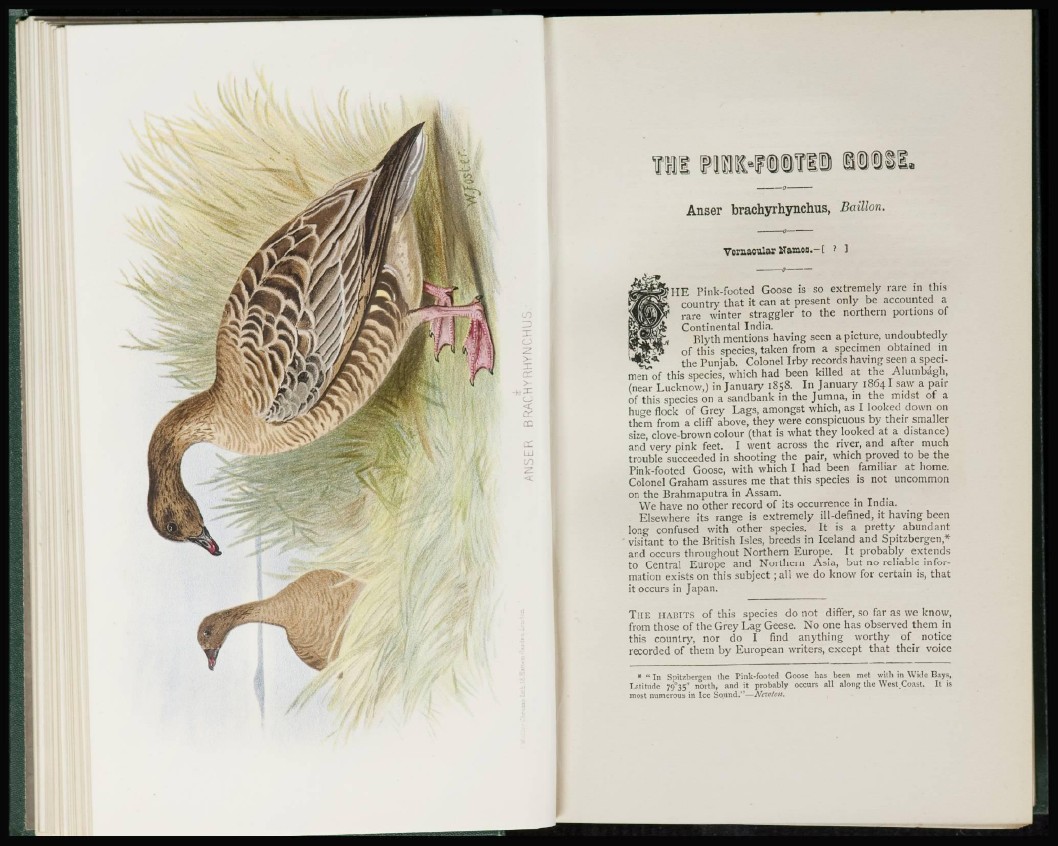
I l l M K I O T i l i@i
Anser brachyrhynchus, Baillon.
Vernacular Names.—[ ? 1
HE Pink-footed Goose is so extremely rare in this
country that it can at present only be accounted a
rare winter straggler to the northern portions of
Continental India.
Blyth mentions having seen a picture, undoubtedly
of this species, taken from a specimen obtained in
the Punjab. Colonel Irby records having seen a specimen
of this species, which had been killed at the Alumbagh,
(near Lucknow,) in January 1858. In January 18641 saw a pair
of this species on a sandbank in the Jumna, in the midst of a
huge flock of Grey Lags, amongst which, as I looked down on
them from a cliff above, they were conspicuous by their smaller
size, clove-brown colour (that is what they looked at a distance)
and very pink feet. I went across the river, and after much
trouble succeeded in shooting the pair, which proved to be the
Pink-footed Goose, with which I had been familiar at home.
Colonel Graham assures me that this species is not uncommon
on the Brahmaputra in Assam.
We have no other record of its occurrence in India.
Elsewhere its range is extremely ill-defined, it having been
long confused with other species. It is a pretty abundant
visitant to the British Isles, breeds in Iceland and Spitzbergen,*
and occurs throughout Northern Europe. It probably extends
to Central Europe and Northern Asia, but no reliable information
exists on this subject ; all we do know for certain is, that
it occurs in Japan.
THE HABITS of this species do not differ, so far as we know,
from those of the Grey Lag Geese. No one has observed them in
this country, nor do I find anything worthy of_ notice
recorded of them by European writers, except that their voice
* " In Spitzbergen the Pink-footed Goose has been met with in Wide Bays,
Latitude 79°35" north, and it probably occurs all along the West Coast. It is
most numerous in Ice Sound."—Newton.